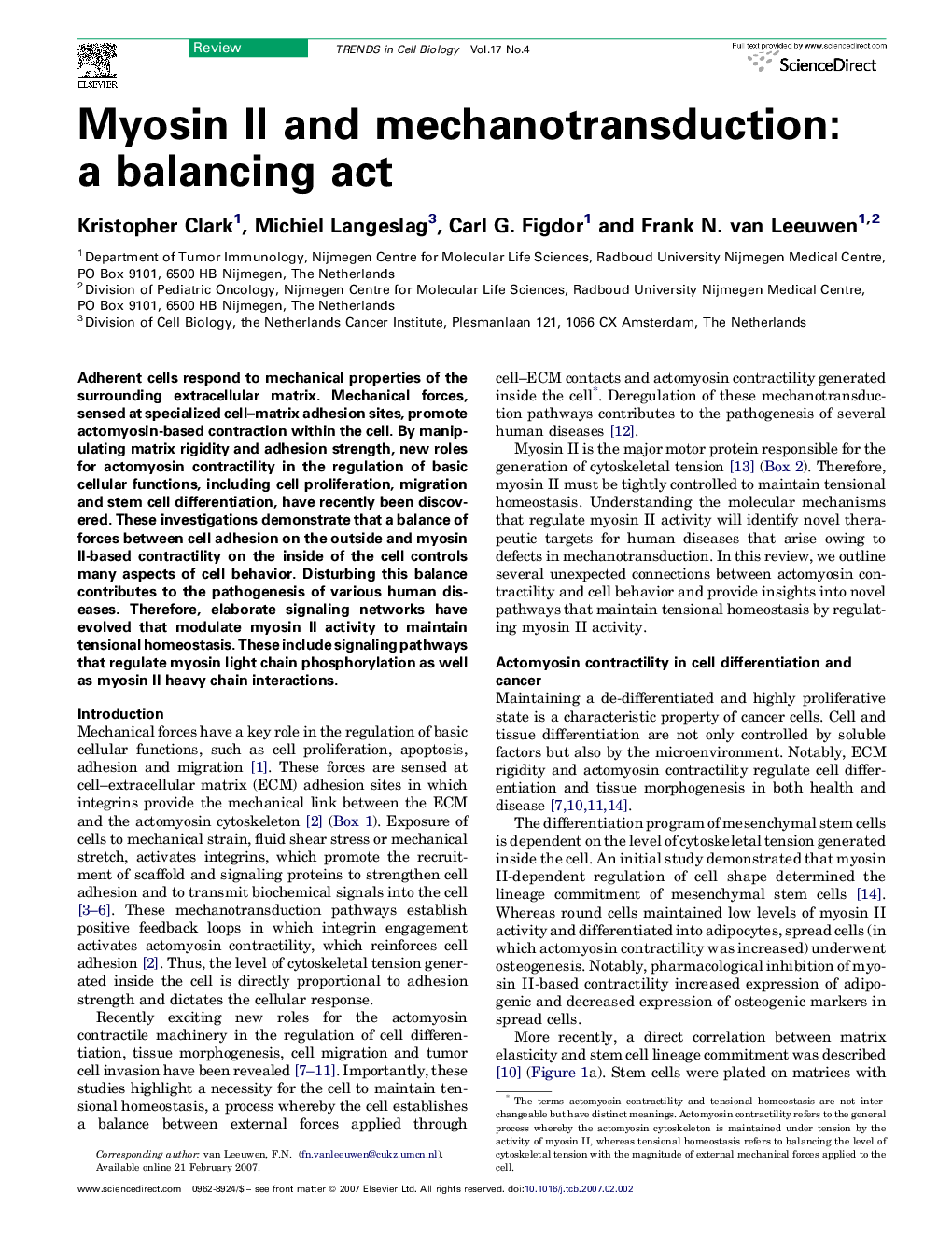| Article ID | Journal | Published Year | Pages | File Type |
|---|---|---|---|---|
| 2205071 | Trends in Cell Biology | 2007 | 9 Pages |
Adherent cells respond to mechanical properties of the surrounding extracellular matrix. Mechanical forces, sensed at specialized cell–matrix adhesion sites, promote actomyosin-based contraction within the cell. By manipulating matrix rigidity and adhesion strength, new roles for actomyosin contractility in the regulation of basic cellular functions, including cell proliferation, migration and stem cell differentiation, have recently been discovered. These investigations demonstrate that a balance of forces between cell adhesion on the outside and myosin II-based contractility on the inside of the cell controls many aspects of cell behavior. Disturbing this balance contributes to the pathogenesis of various human diseases. Therefore, elaborate signaling networks have evolved that modulate myosin II activity to maintain tensional homeostasis. These include signaling pathways that regulate myosin light chain phosphorylation as well as myosin II heavy chain interactions.
